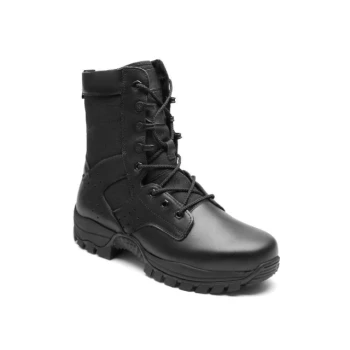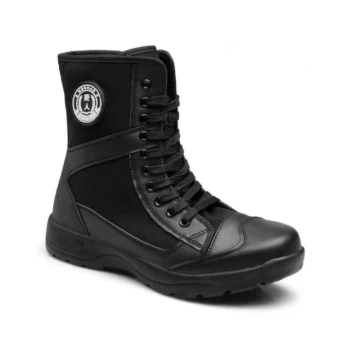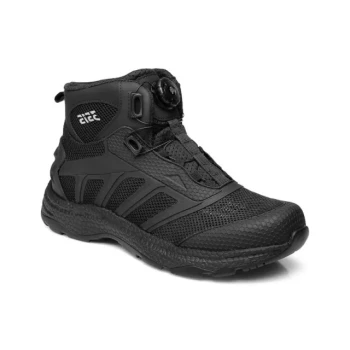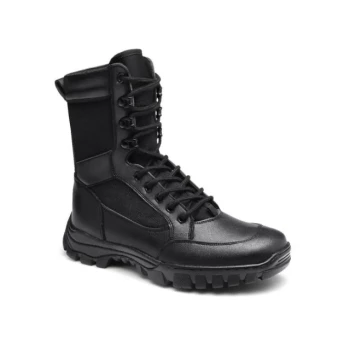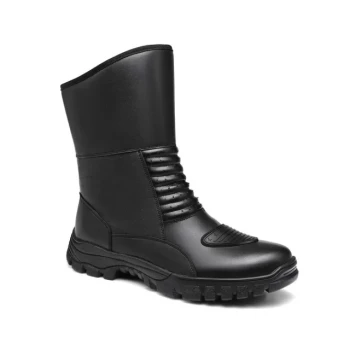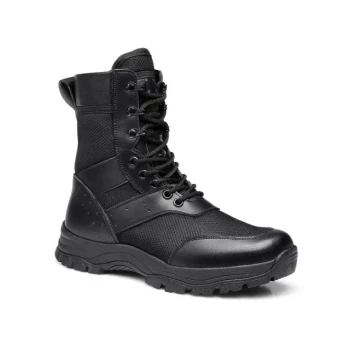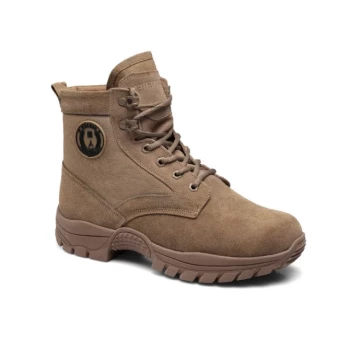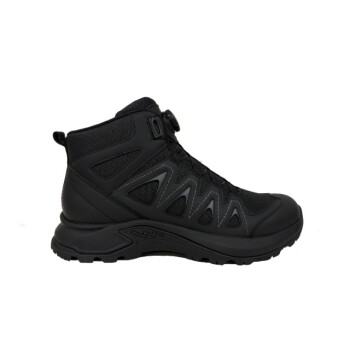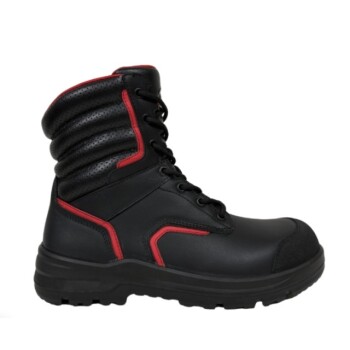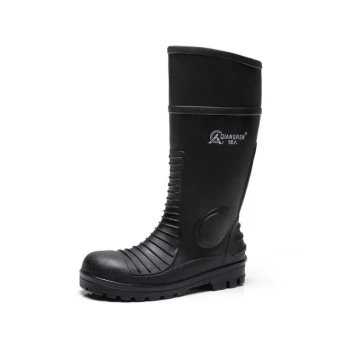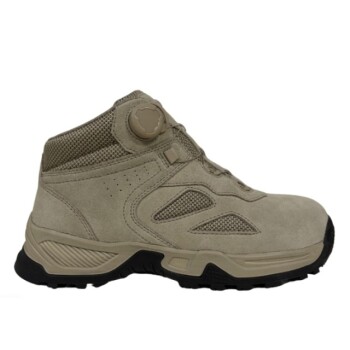In a direct comparison, tactical boots are significantly more breathable than combat boots. This is a direct result of their core design philosophy: tactical boots use lighter, more flexible materials engineered for agility and comfort, which allows for better air circulation. Combat boots, in contrast, prioritize maximum durability and protection, using thicker, heavier materials that inherently trap more heat.
The difference in breathability between tactical and combat boots isn't a flaw in either design; it is the deliberate outcome of a fundamental trade-off. You are choosing between the nimble comfort required for speed and the rugged protection demanded by hazardous environments.

The Core Design Philosophy: Agility vs. Armor
The breathability of a boot is a byproduct of its primary purpose. Each boot type is an exceptional tool designed for a very different job.
Tactical Boots: Built for Speed and Comfort
Tactical boots are engineered for versatility and agility, making them ideal for law enforcement, first responders, and personnel in training.
Their construction prioritizes lightweight materials and flexibility. This allows for quick, responsive movement and sustained comfort over long shifts on patrol or in controlled fieldwork.
Combat Boots: Engineered for Protection and Endurance
Combat boots are built to a military standard for durability and support in the most extreme conditions imaginable.
They are designed to protect a soldier's feet from rugged terrain and battlefield hazards. This requires heavy-duty outsoles, reinforced uppers, and a focus on ruggedness over lightweight comfort.
A Closer Look at Breathability Drivers
Several key construction differences directly impact how well a boot manages heat and moisture.
Materials and Construction
Tactical boots often incorporate modern, breathable materials like nylon mesh panels alongside leather or synthetics to promote airflow.
Combat boots typically feature thick, full-grain leather and other robust, reinforced materials designed to resist abrasion and impact, which naturally restricts air exchange.
Weight and Flexibility
The lighter weight and increased flexibility of a tactical boot mean less material is encasing the foot. This less-is-more approach directly contributes to better ventilation.
The rigid, heavy construction of a combat boot is essential for ankle support and protection but creates a more sealed environment, trapping heat and moisture.
Understanding the Trade-offs
Choosing one boot type over the other means accepting a set of compromises. Understanding these is critical to making an informed decision.
The Cost of Breathability: Reduced Protection
The very features that make tactical boots breathable and lightweight—thinner materials and flexible construction—also mean they offer less protection. They may lack the heavily reinforced toe caps or puncture-resistant soles found in military-grade combat boots.
The Cost of Durability: Heat and Weight
The armor-like protection of combat boots comes at a cost. The thick, durable materials are excellent for safeguarding your feet but are far less comfortable in warm climates, leading to heat retention and potential discomfort during prolonged use.
Making the Right Choice for Your Mission
Your intended use and environment are the only factors that matter when selecting the right boot.
- If your primary focus is agility and all-day comfort for patrol or fieldwork: Tactical boots are the superior choice for their lightweight design and superior breathability.
- If your primary focus is maximum protection and support in harsh, unpredictable, or combat environments: Combat boots are the correct tool, providing the durability needed to withstand extreme conditions.
Choosing the right footwear is a critical decision that directly impacts your performance, safety, and comfort.
Summary Table:
| Feature | Tactical Boots | Combat Boots |
|---|---|---|
| Primary Focus | Agility, comfort, versatility | Maximum protection, durability |
| Breathability | High (lightweight, flexible materials) | Low (thick, heavy materials) |
| Ideal For | Law enforcement, first responders, patrol | Military, extreme environments, hazardous terrain |
| Key Trade-off | Less protection for better airflow | More heat retention for superior durability |
Need the Right Boots for Your Team?
As a large-scale manufacturer, 3515 produces a comprehensive range of footwear for distributors, brand owners, and bulk clients. Our production capabilities encompass all types of tactical and combat boots, ensuring you get the perfect balance of breathability, protection, and durability for your specific needs.
Let us help you equip your personnel with footwear that enhances performance and safety.
Contact us today to discuss your requirements and receive a customized solution!
Visual Guide
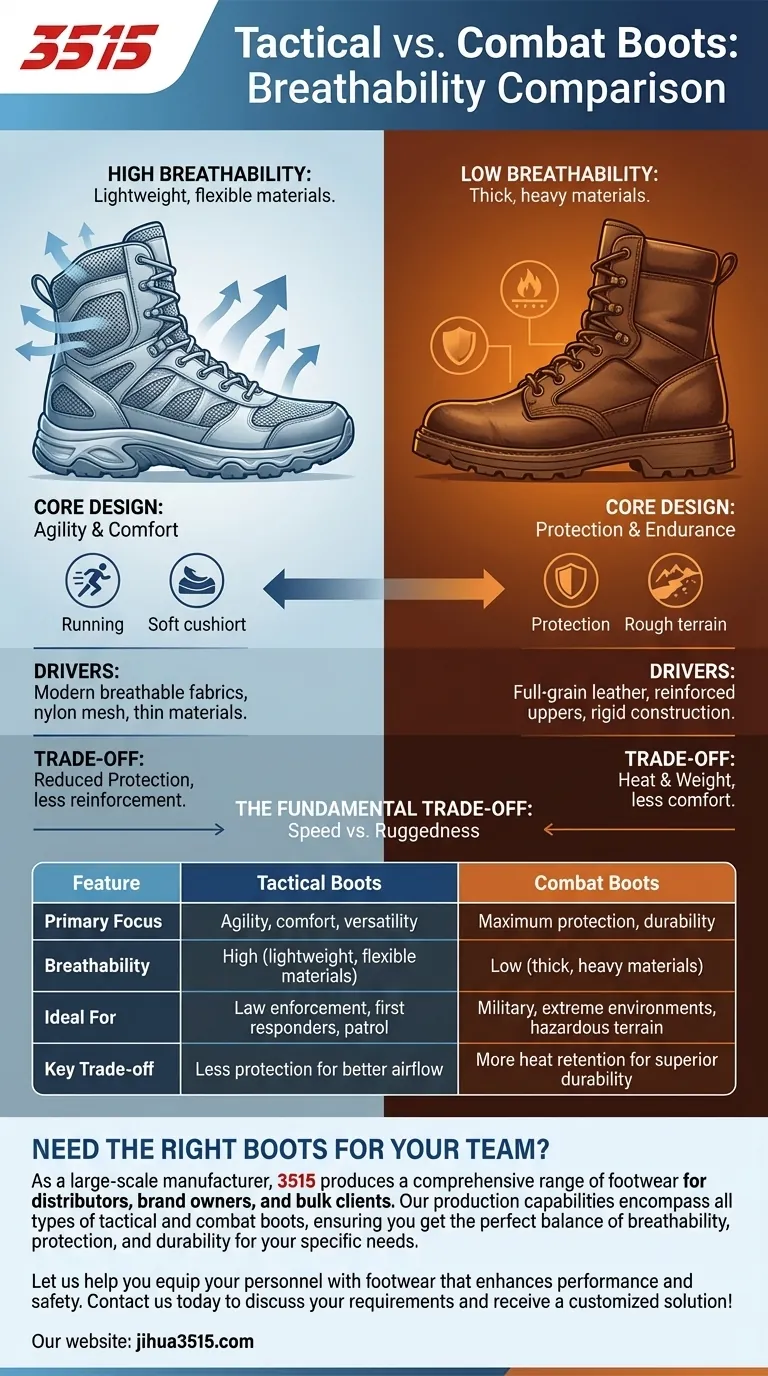
Related Products
- Durable Military Combat Boots with Water Drainage for Wholesale & OEM
- Durable Leather Tactical Boots Wholesale & Custom Manufacturing for Brands
- Durable High-Ankle Tactical Boots for Wholesale & Custom Manufacturing
- Durable Mid-Cut Tactical Boots for Wholesale & Private Label
- Wholesale Lightweight Tactical Boots with Dial Closure OEM & Bulk Orders
People Also Ask
- Why has Cordura remained relevant despite new fabrics? The Unbeatable Balance of Durability & Comfort
- What are military boots designed for? Unmatched Durability & Protection for Extreme Conditions
- How can a shiny finish be achieved on military boots? A Step-by-Step Guide to a Mirror Shine
- How did combat boots transition from military use to popular culture? From Battlefield to Fashion Statement
- What replaced jungle boots in the US military? The Shift to Tan Suede Combat Boots

